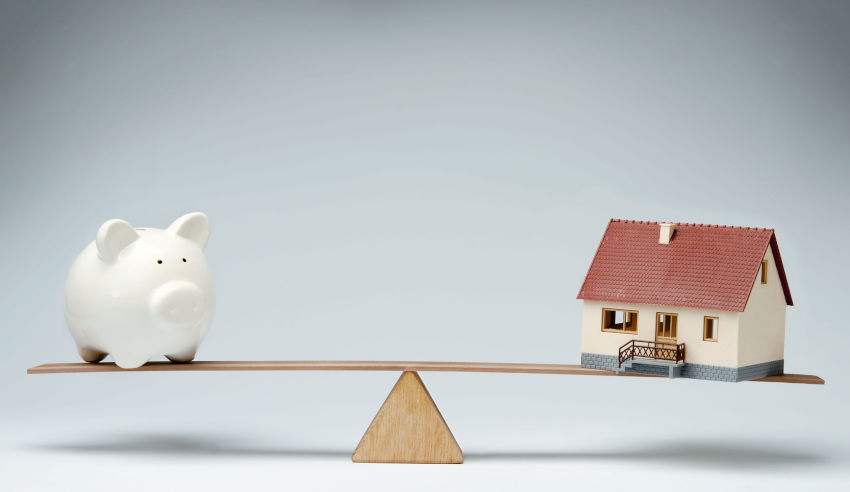What is the right balance of loan-to-value ratio?
Debt is always an issue for most property investors, but property accountant Munzurul Khan believes that one can achieve a comfortable loan-to-value ratio as long as he understands his personal financial circumstances.

According to Smart Property Investment’s Phil Tarrant, loan-to-value ratio (LVR) basically determines “how big is the asset and what is the debt against it”.
However, instead of asking the right balance between loan and value, one will do better to understand his current position as a property investor.
Munzurul said: “[I say to my clients], ‘Let's take a step back and let's understand where are you at the moment. What's your income? What's your asset value … ? What are your goals and objectives?’ [Then I ask], ‘If this is where you are financially and this is where you would like to be financially, what's the time frame?’ "
“[A longer] time frame means that you can afford to have a lower level of LVR—that means your purchases are rather slow but you've got a longer time frame so you can [still achieve your goals].
“If your time frame is rather short, then ... perhaps your LVR needs to be a little bit higher,” the accountant added.
The higher the LVR, the greater the level of risk, so a property investor must also be able to determine how much risk he is willing to take, the level of experience he has to be able to handle the challenges that he could face along the way, and the buffer he is willing to establish for when anything goes wrong.
According to Munzurul: “As long as ... you've got some of the uncertainties in your mind and possible mitigation of [those] uncertainties, the LVR arguably can be a little bit higher.”
Is there a golden rule?
While a comfortable LVR position could not be generalised for all investors, Munzurul said that most people tend to start with a high loan-to-value ratio. This strategy gives them more access to a bigger fund and, consequently, a bigger level of asset growth.
However, the decision to go over 80 per cent LVR must still depend on the type of property that one is looking to buy as high growth potential entails more extra costs.
Munzurul explained: “If you .... buy a lower level of property, say [a] $300,000 to $400,000-purchase, the extra cost is rather low, but if you're buying a million dollar-purchase, as an example, your [Lender Mortgage Insurance] would be about $35,000 to $40,000.”
“That example of a million dollar-purchase, that one probably suggests that you don't go to anything over 80 per cent. But a lower purchase, [like] $300,000-$400,000, if your risk profile is okay … [and you have clear] goals and objectives, you might wish to go a little bit higher than that,” he added.
Ideally, a property investor can start with a high LVR, aim to go back to 80 per cent over time, and then work hard to make it go lower.
“If you go into 70 per cent [LVR] over a period of time … or 65 per cent … you've got about 1/3 of the equity and 2/3 of the banking funding, so there is quite a bit of ... buffer,” the accountant said.
This will give the property investor a chance to draw down on the equity and use it to fund his portfolio based, still, on his personal risk confidence level.
Phil explained: “[Your] risk confidence level [may] sit between 60 and 80. You might tip up and tip down, and tip-up and tip-down, that's what people do.”
“As long as the objective of tip-up is to build another growth asset ... then that's a good debt. But if the objective of that tip-up is that we take away a bit of funding and we go away and do other things and we have a little bit of fun, that is a bad funding,” Munzurul added.
In summary, property investors must consider the following when determining the most comfortable LVR position for themselves:
- Age bracket
- Risk profile
- Investment goals and objectives
- Personal time frame
- Type of property to buy
‘All-inclusive’ computation
At the end of the day, it’s all about striking a good balance between the cash flow in your portfolio and the debt you hold against it—the higher the debt, the higher the need to generate cash in order to service the property portfolio.
Instead of having a singular outlook regarding the process of determining a good loan-to-value ratio, the calculation needs to be “all-inclusive”.
Munzurul said: “If [you’re] borrowing at 80 per cent, one probably should not be [taking that] 80 per cent of the purchase price as our loan and mortgage and interest cost. One probably should explore that a bit—where is the balance of that 20 per cent coming in?”
“Is that a genuine cash [or] is that being acquired and extracted from my principal place of residence? Either way, there is a cost involved to it … [so] the calculation of the cash flow should be done at 100 per cent of your mortgage, even with the fact that you borrow 80 per cent [or more].
“Add in all the incidental costs … That gives you the true, true, true cash flow. Rather conservative, but the safer,” the accountant explained further.
Phil concluded: “[You] shouldn't just be thinking about LVR as in an equity position [but also] how the LVR on a property or portfolio affects your capacity to keep growing [in relation with the] cash flow consequence of holding a property.”
Tune in to Munzurul Khan’s new episode on The Smart Property Investment Show to know more about the ins and outs of diversification and the right time to invest into other asset clouds, as well as the risks associated with having two names on a mortgage and title and which one is preferable to new home buyers.

